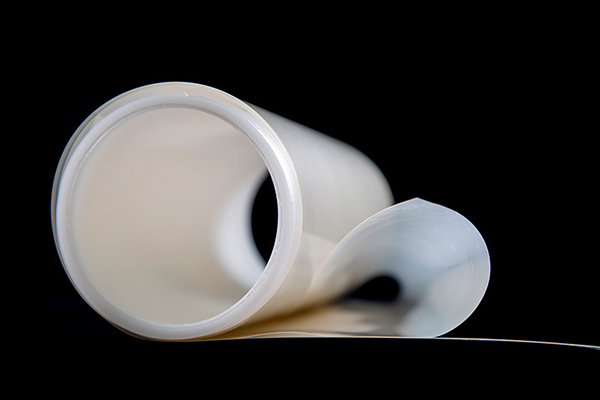Product Introduction of Proton Exchange Membrane for Batteries:
By incorporating ePTFE (expanded polytetrafluoroethylene) microporous reinforced material into the traditional proton exchange membrane, we achieve high strength, excellent conductivity, and low ion permeability. ProtoneX's PEM for hydrogen fuel cell membranes has been demonstrated in both laboratory settings and the market to be comparable to similar products from Gore.
Product Advantages of Proton Exchange Membrane for Batteries:
1. The Fuel cell membrane we produce is made of high-quality materials, has a long service life, can withstand multiple charge and discharge cycles without significant degradation, and reduces maintenance and replacement costs.
2. The Proton Exchange Membranes for Hydrogen Fuel Cells we produce is relatively environmentally friendly during production and use, does not contain toxic and hazardous substances, meets environmental protection requirements, and is safe to use.
3. The Fuel cell membrane we produce can start quickly at low temperatures, which is suitable for application scenarios that require rapid response.

Thickness and Basis Weight Properties:
| Membrane Type | Thickness(microns)(um) | Weight(g/m²) |
| PXHY-12-T01 | 12 | 23.6 |
Physical and Other Properties:
| Physical and Other Properties | Typical Value | Test Method | |
| Tensile Test (23°C,50%RH) | MD | TD | |
| Tensile Strength(MPa) | ≥32 | ≥32 | GB/T 20042.3-2022 |
| Tensile Modulu(MPa) | ≥400 | ≥400 | GB/T 20042.3-2022 |
| Elongation at break(%) | ≥150 | ≥150 | GB/T 20042.3-2022 |
| Specific Gravity | 1.97 | — | |
| Other Properties | Index Parameters | Test Method | |
| Conductivity(S/cm) | ≥0.100 | GB/T 20042.3-2022 | |
| Hydrogen Crossover | <5.0×10 -8 | GB/T 20042.3-2022 | |
| [cm3·cm/(cm2·s·0.1MPa)] | |||
| Hydrogen Crossover Current (mA/cm2) | <2.0 | ||
Hydrolytic Properties:
| Hydrolytic Properties | Typical Value | Test Method | |
| Water Content(%) | 10.0±3.0 | GB/T 20042.3-2022 | |
| Water Uptake(%) | 50.0±5.0 | GB/T 20042.3-2022 | |
| Thickness Swelling Rate at 23°C, 50% RH (% increase) | |||
| 23℃ soaked from 50% RH | ≤10 | GB/T 20042.3-2022 | |
| 100 ℃ soked from 50% RH | ≤30 | GB/T 20042.3-2022 | |
| Linear Expansion at 23℃, 50% RH (% increase) | |||
| MD | TD | ||
| 23℃ soaked from 50% RH | ≤3 | ≤4 | GB/T 20042.3-2022 |
| 100℃ soaked from 50% RH | ≤5 | ≤5 | GB/T 20042.3-2022 |
Notes:
Operating temperature: Strictly control the operating temperature to ensure that it operates within the operating temperature range of the proton exchange membrane to avoid degradation or damage to the Proton Exchange Membranes for Hydrogen Fuel Cells.
Humidity management: Maintain an appropriate humidity level. The proton exchange Fuel cell membrane requires a certain humidity to maintain its conductivity, but too high or too low humidity will affect the performance of the membrane.
Pressure control: Ensure that the supply pressure of hydrogen and oxygen is within the specified range to avoid damage to the Proton exchange membrane for batteries material due to too high or too low pressure.